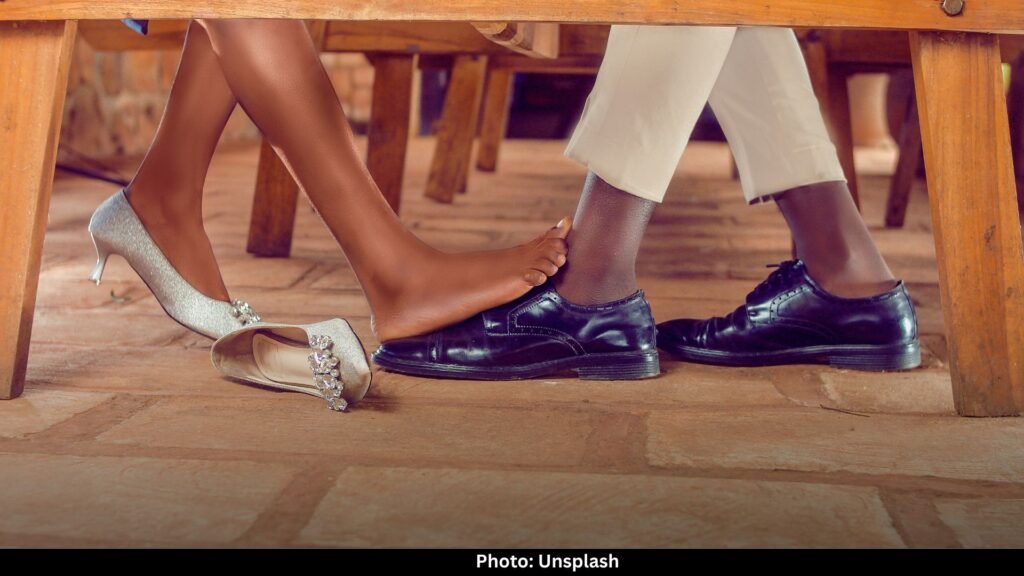Take a look at the shoes you’re wearing right now. They may look ordinary, but they’ve already recorded more of your life than you realize. Every scratch, every crease, every worn-out sole is a silent story. Shoes follow us into boardrooms and bus stops, into weddings and funerals, through crowded markets and empty late-night walks. They touch the ground before we do, and in doing so, they collect fragments of our days, our choices, and our identities.
Shoes don’t need to speak to tell stories. They do it quietly, in the way the leather softens, the laces fray, or the soles carry dust from yesterday’s path. What this really means is that our footwear doubles as an unintentional diary. And most of us never stop to read it.
The Evidence Written Into Soles
Here’s the thing: shoes keep a record of how we move. A runner’s sneakers wear differently from a shopkeeper’s slippers. A pair of office heels will show pressure points that reveal more about posture and stress than any self-report ever could. Look at someone’s soles and you’ll often see uneven patterns. Maybe one side is flatter, maybe the heel is chipped, maybe the toes are scuffed. Each mark is evidence of habits built over time.
This isn’t just about mechanics. A rushed life leaves shoes dirtier, faster. A more careful walker might keep their footwear clean for years. The wear and tear reflects not just physical movement but the rhythm of living itself.
From First Steps to Growing Up
Shoes are especially powerful when tied to memory. Ask parents why they sometimes keep their child’s first pair of shoes, and the answer is obvious: it isn’t about fabric or leather, it’s about the steps those tiny shoes represent. They are symbols of growth, of watching someone go from crawling to running, from needing help to charging ahead on their own.
School shoes tell their own set of stories. Anyone who grew up wearing polished black shoes remembers the ritual of scrubbing them before inspection. Those shoes carried us into exams, playground fights, and friendships. They were part of our daily identity, and when they wore out, we simply moved on to the next pair, while they stayed behind, holding the weight of those years.
Shoes as Cultural Markers
Let’s break it down. Shoes aren’t just personal, they’re cultural. In many households, removing shoes before entering isn’t optional. It’s a sign of respect, a way of drawing a line between the outer world and the inner space. In other traditions, shoes are tied to milestones. Wedding shoes, ceremonial footwear, and special pairs for festivals all carry symbolic weight far beyond their practical use.
Fashion also plays a role. A shiny leather shoe can suggest authority. High heels carry connotations of style, confidence, sometimes even discomfort. Worn-out slippers at a street stall hint at daily survival. Walk through any city and you’ll see its social fabric reflected in the shoes people wear. They are both practical necessities and cultural statements.
Memory Etched in Material
Think about the shoes tied to specific memories. The ones you wore when you graduated. The ones that blistered your feet during a job interview but still made you feel sharp. The pair you took on a trip abroad that now feels impossible to throw away, even if they’re falling apart. Shoes become anchors to moments.
Travelers often feel this the most. A pair of boots that’s been across mountains carries mud, scratches, and scars that no cleaning can fully erase. Throwing them out feels like throwing away the journey itself. They’re not just objects at that point, they’ve absorbed the memory of places.
The Relationship Between Shoes and Identity
Here’s something subtle but real: shoes influence how we feel about ourselves. Slip into polished shoes, and you walk differently. Put on sneakers, and suddenly your stride loosens. Shoes give us psychological cues. They prepare us for work, for play, for ceremony, for rest.
They also shape how others perceive us. A stranger might not notice your watch or bag, but they’ll notice your shoes. Scuffed or spotless, understated or bold, they silently contribute to first impressions. Whether we care about fashion or not, our shoes always say something about us.
Comfort, Pain, and the Stories They Hold
Shoes carry not just our feet but also our physical experiences. The blister you got during a long day of walking. The relief of slipping off tight shoes at night. The warmth of winter boots. The lightness of sandals on a beach. Each sensation adds a layer to the story.
Some shoes symbolize freedom like flip-flops on vacation. Others represent discipline like stiff formal shoes. Some carry the memory of discomfort so strong that you remember the pain years later. All of this is part of the emotional record written into footwear.
Shoes Across Social Lines
Shoes also reveal inequality. A polished office shoe and a broken slipper are both footwear, but they represent different realities. For some, shoes are choices. For others, they’re bare minimum survival. A child walking barefoot to school tells as much of a story as a teenager unboxing limited-edition sneakers. Shoes map out social positions without a single word spoken.
And yet, regardless of wealth, everyone’s shoes tell stories. The rich may replace pairs often, but each replacement marks phases of taste and time. The poor may wear one pair until it dissolves, and that too becomes a story of resilience and endurance.
Letting Go of Old Shoes
Here’s the part many of us resist: shoes don’t last forever. Eventually they fall apart. Letting them go feels heavier than expected because you’re not just discarding fabric or leather, you’re discarding memories. Many people keep old pairs tucked away in closets, long past usefulness. They’re reminders of youth, of trips, of chapters that closed.
Sometimes we part with them reluctantly. Sometimes we donate them and hope they find new steps elsewhere. But the act of letting go always carries a small weight. Shoes are everyday objects, yet their goodbye often feels like closing a chapter.
Shoes in Storytelling and Symbolism
Literature has always known this. From Cinderella’s glass slipper to the boots of soldiers in war poems, shoes are metaphors for fate, journeys, and transformation. To walk in someone else’s shoes is to understand their life. That phrase exists because shoes embody lived experience more than almost any other object we own.
Shoes symbolize both beginnings and endings. New shoes often come with hope, while worn-out ones carry nostalgia. They are perfect props for human stories because they are, quite literally, with us at every step.
Reading the Diary Beneath Our Feet
What this really means is that shoes quietly keep a record we never consciously write. They hold the dirt of roads we’ve crossed, the shape of our footsteps, the pace of our days. They are the background to triumphs, struggles, and ordinary routines. They grow old alongside us, reflecting not just where we’ve been but also how we moved through it.
The next time you pick up an old pair, don’t just see worn soles. See the diary written in silence. Shoes don’t shout their stories, but they carry them patiently, step after step, waiting for us to notice.
Read More: The Unspoken Bond Between Tea Vendors and Their Regular Customers




